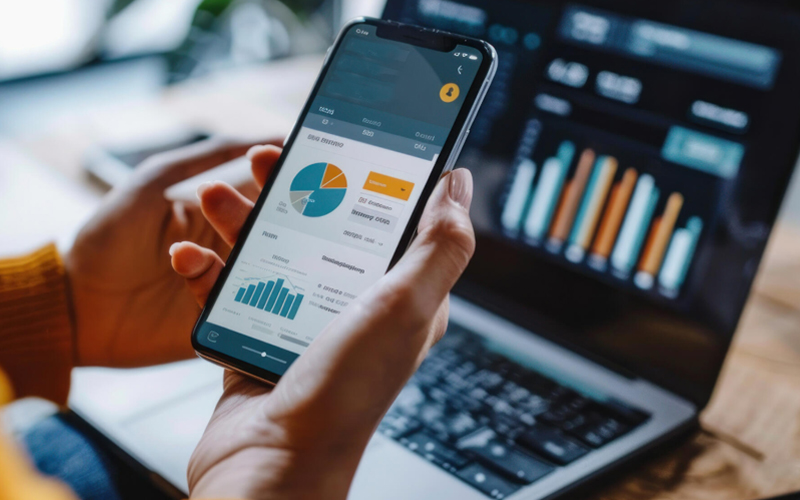Supply and demand forecasting are common terms businesses use within supply chain management. These terms intertwine with each other and yet are different. Without efficient supply and demand forecasting and planning, warehouses can face these challenges –
- Inaccurate inventory information.
- Flawed order management.
- Inability to adapt to the changing market demand.
- Inefficient space utilisation.
This article explains the difference between demand forecasting and planning, their importance, techniques, and steps.
Difference between demand planning and forecasting
Demand forecasting is the stepping stone to demand planning. Here are the main differences between the two –
Demand forecasting |
Demand planning |
The objective is to predict the demand for a product in the future. |
The objective is to account for the existing resources, and those needed to fulfil the demand. |
Creates a weekly, monthly, or yearly demand forecast. |
Determines how to fulfil the demand, as it arrives and the preparation needed. |
It is highly data-driven. Uses data from sales, marketing, finance, and operations departments. |
Finds the best sources and ways to procure the stock at a low cost and at the right time. |
Derives conclusions from real-time consumer behaviour and market trends. |
Delegates the duties to the team to fulfil the requirements of demand forecast. |
Uses AI and ML technologies for accurate forecasting. |
Collaborates with internal teams and external partners for seamless fulfilment in the future. |
Why is demand forecasting important in supply chain management?
Without a clear understanding of future demand, businesses cannot make the right decisions. Here is why supply and demand forecasting are important –
Advance budgeting
Use supply and demand forecasting to reduce risks and make better financial decisions to directly raise the profit margins, allocation of resources, cash flow, expansion opportunities, operating costs, and staffing.
Demand planning
Synchronise the order fulfilment with the market demand before the launch or sourcing from the manufacturer. Your products sold out for weeks or excess inventory harms your business reputation and budgeting, both of which are mitigated by effective supply and demand forecasting.
Inventory stocking
Stocking the inventory entails a cost of warehousing, staffing, and receiving the items. Forecast demand accurately with supply and demand forecasting to keep stock levels aligned with demand, replenishing at the right time without occupying unnecessary warehouse space.
Efficient pricing strategy
Dynamically price the products based on the market demand and potential selling opportunities. Develop competitive pricing, invest in growth, and use the right marketing strategies at the right time, all guided by accurate supply and demand forecasting.
Demand forecasting techniques
The following demand forecasting techniques leverage data and analytics from internal systems over a specified period –
- Macro-level – Monitors the generic external forces and economic conditions that could broadly disrupt the demand. This reveals the customer acquisition opportunities due to market shifts.
- Micro-level – This technique drills down to the specific industry or customer base and the market forces that impact the demand within this segment.
- Short-term – This demand forecasting is for less than 12 months and plans for yearly events such as festivals, weekends, and bank holidays. For example, weekend sale prospects of kitchen items.
- Long-term – This is done over the long term and monitors seasonal demand changes, annual patterns, current capacity, and expansion capability. For example, the international launch of the brand.
Why is demand planning important?
Business reputation suffers and customers are lost if products remain out of stock for long. Overstocking leads to the wastage of warehouse space, money, and man-hours. With excellent demand planning, businesses can always stay on top of the changes in the market and take proactive steps to adjust their inventory. They always have the right amount of inventory to fulfil the market demand without overstocking or understocking.
Demand planning steps
Demand planning starts with forecasting and is a multi-step process. The right demand planning steps are –
Get the right technology
Research, test, and onboard the right systems and technologies to help you do demand planning. See if the system can handle minute details, gather information from your existing systems, and present the data in a format that is easy to understand.
Gather and prepare planning data
Use the system to gather and prepare the planning data. Get visibility into the real-time movement of inventory and monitor the metrics for a clear understanding of the areas for improvement.
Define a process model
The demand planning cycle process could be different for different businesses. In most cases, the demand planning steps are –
- Data preparation.
- Initial demand forecasting.
- Incorporating market intelligence.
- Reconciliation of bottom-up and top-down financial and sales forecasts.
- Derive a final demand forecast.
- Use real-time analytics for performance monitoring.
Implement and monitor
Use the historical data to design a pilot version of the supply and demand forecasting model. Thereafter, make regular adjustments to reduce the errors and eventually make the model fit for use in the live environment.
For organisations on the digital transformation journey, agility is key in responding to a rapidly changing technology and business landscape. Now more than ever, it is crucial to deliver and exceed on organisational expectations with a robust digital mindset backed by innovation. Enabling businesses to sense, learn, respond, and evolve like a living organism, will be imperative for business excellence going forward. A comprehensive, yet modular suite of services is doing exactly that. Equipping organisations with intuitive decision-making automatically at scale, actionable insights based on real-time solutions, anytime/anywhere experience, and in-depth data visibility across functions leading to hyper-productivity, Live Enterprise is building connected organisations that are innovating collaboratively for the future.
How can Infosys BPM help with supply and demand forecasting?
The Infosys BPM supply chain optimization solutions comes with the right tools and technologies to help you do accurate demand forecasting and planning by sourcing information from internal systems and external market drivers.
Read more about demand forecasting and planning at Infosys BPM.








